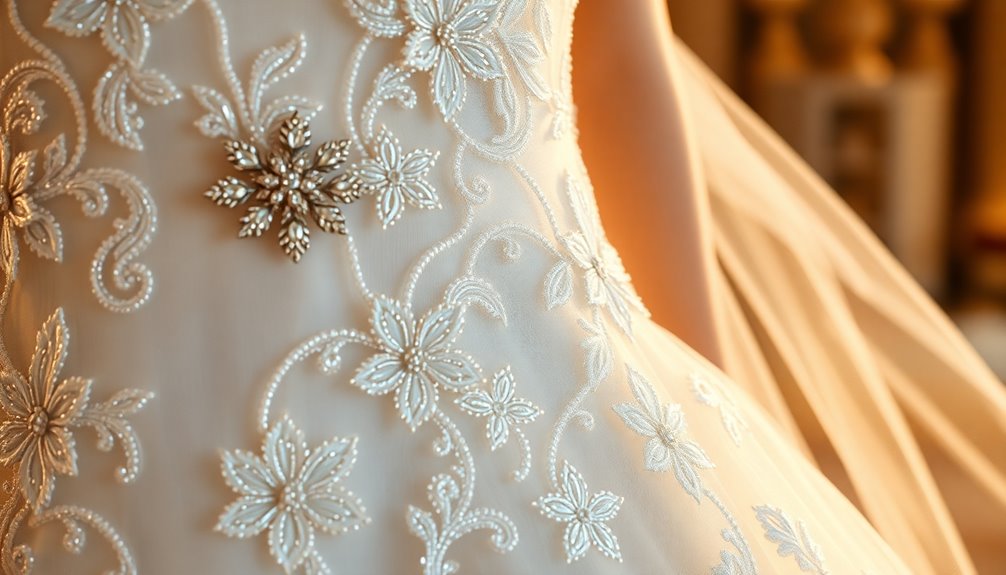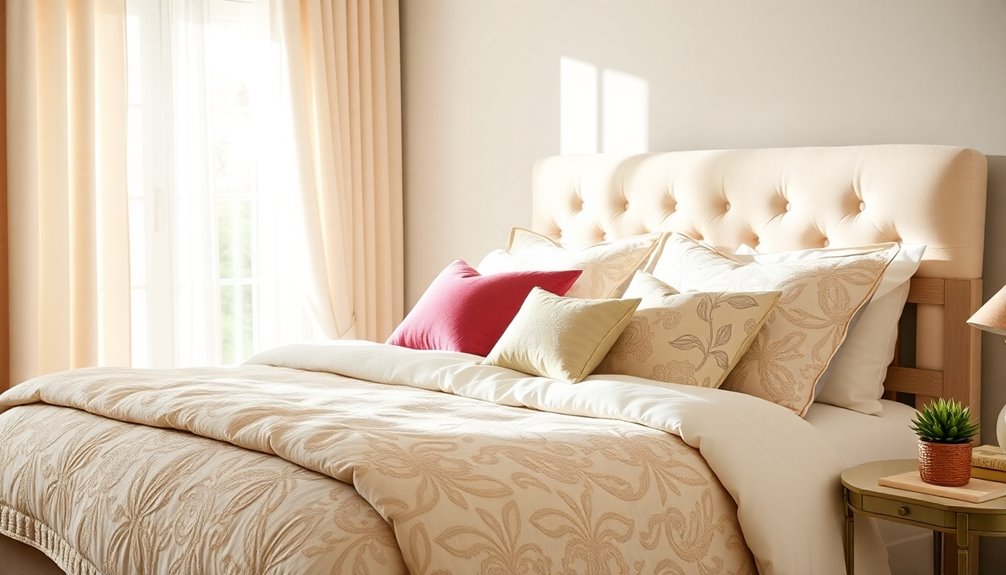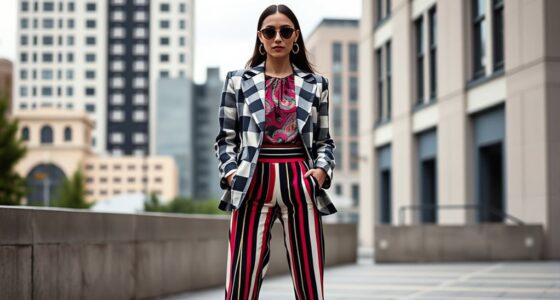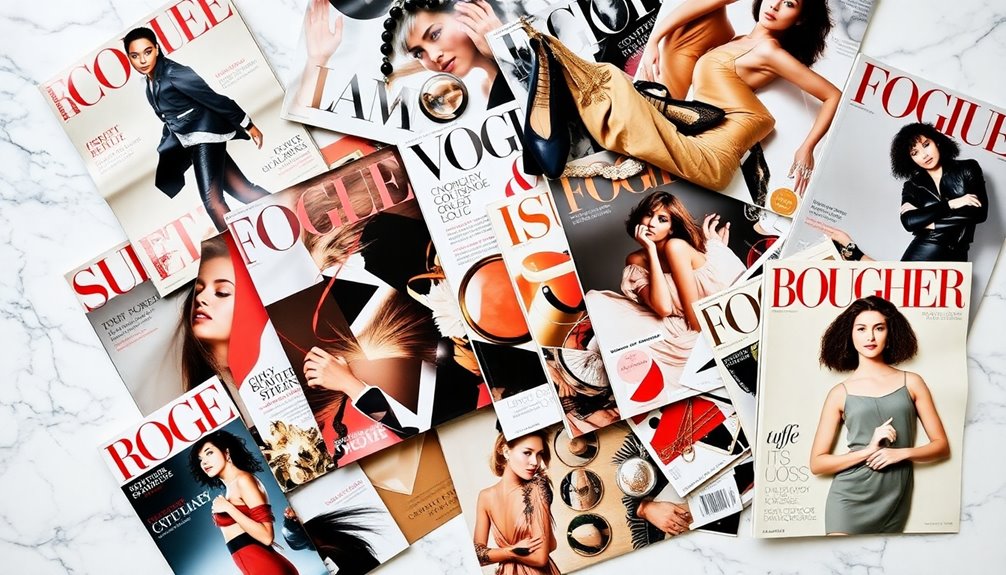Haute couture represents the pinnacle of fashion, merging luxury with meticulous artistry. When you explore this domain, you find custom-fit creations made from the finest materials, reflecting personal style and identity. Established in the late 19th century, these exclusive garments now require a strict adherence to rules, ensuring each piece is handmade and uniquely tailored. The allure deepens with innovations in technology and a focus on sustainability, responding to modern demands. This ever-evolving field not only showcases craftsmanship but also tells rich stories. Stick around, and you'll uncover even more about haute couture's fascinating world.
Key Takeaways
- Haute couture embodies luxury through custom-fitted clothing made from the finest materials, showcasing the artistry of skilled craftsmanship.
- The exclusivity of haute couture is represented by a small number of fashion houses that maintain high standards and unique designs.
- Cultural significance drives innovation in haute couture, reflecting societal values and artistic expression, as seen in collections by iconic designers.
- Sustainability and inclusivity are increasingly prioritized, with a focus on ethical practices and diverse body representation in collections.
- Technological advancements enhance personalized fashion experiences, allowing for virtual fittings and bespoke designs tailored to individual preferences.
Definition and Origins

Haute couture, which literally means "high sewing" or "high dressmaking," stands out as the pinnacle of fashion craftsmanship.
This exclusive domain of fashion is all about custom-fitted clothing, meticulously crafted from the highest quality materials. Each piece demands hundreds of hours of intricate design and expert workmanship, ensuring a unique creation tailored to individual clients.
In France, haute couture is legally protected and regulated by the Chambre Syndicale de la Haute Couture, requiring fashion houses to maintain a minimum of 15 employees.
Originating in the late 19th century with Charles Frederick Worth, who launched the first haute couture house in 1858, haute couture has become synonymous with luxury, artistry, and the ultimate expression of personal style.
Historical Milestones
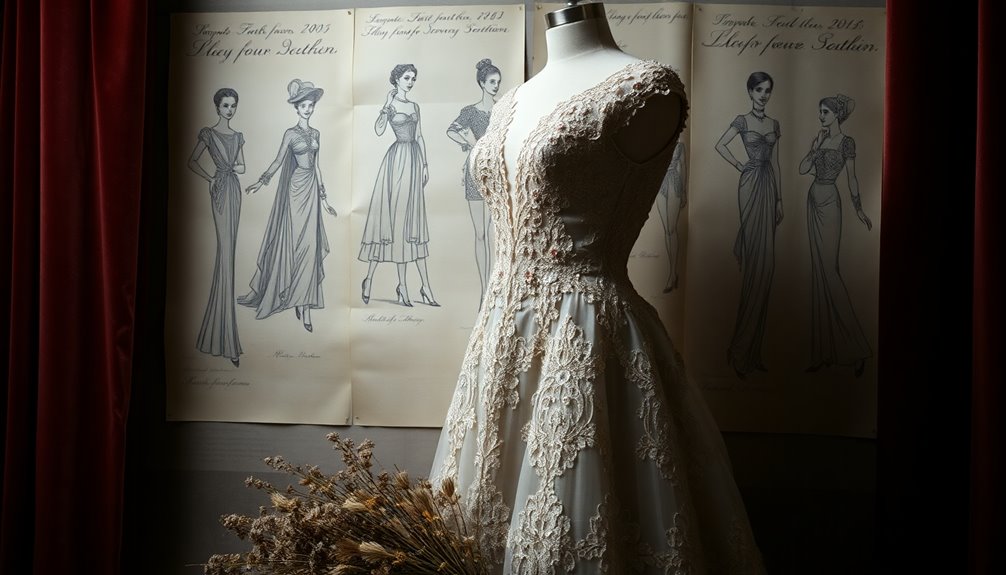
From its inception, haute couture has marked significant milestones that shaped the fashion landscape. Each event not only highlights the evolution of the industry but also reflects changing societal values and artistic innovation.
Here are some key milestones you should know:
- 1868: Formation of Le Chambre Syndicale de la Haute Couture, establishing standards.
- 1947: Christian Dior introduces the "New Look," revolutionizing women's fashion.
- 1966: Yves Saint Laurent opens the first freestanding couture boutique.
- 1980s: The rise of American designers in the haute couture scene.
- Present: Only about 16 fashion houses retain haute couture status, maintaining exclusivity.
These moments continue to influence the way we perceive and engage with high fashion today, making haute couture a living history of style and artistry.
Rules and Regulations

Typically, fashion houses adhere to strict rules and regulations to maintain their haute couture status.
You'll find that each house must employ at least 15 full-time staff and 20 technical workers. Additionally, they need to present a minimum of 50 original pieces each season, showcasing their collections during Paris Fashion Week.
These designs are entirely handmade, emphasizing the artistry involved. Non-compliance with these standards can lead to the loss of haute couture designation, making exclusivity a defining feature.
This regulatory framework not only protects the integrity of haute couture but also enhances its allure, separating it from ready-to-wear and fast fashion.
Craftsmanship and Techniques
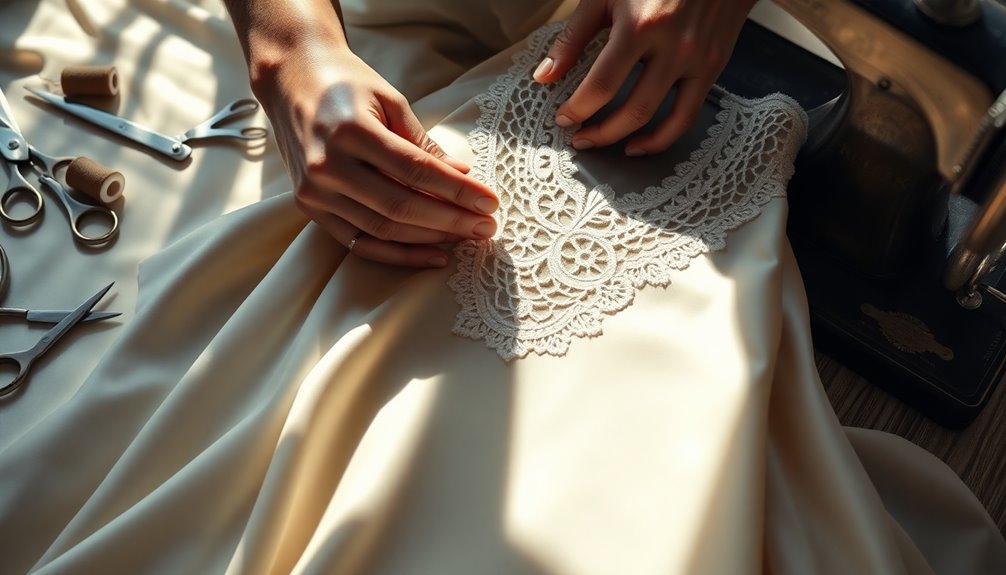
The strict adherence to rules and regulations in haute couture underscores a commitment to unparalleled craftsmanship and techniques.
When you explore this world, you'll discover the artistry involved in every piece. Skilled artisans utilize a range of intricate methods that bring garments to life.
Here are some key aspects of haute couture craftsmanship:
- Hand-executed techniques guarantee precision and uniqueness.
- Luxurious fabrics like silk and velvet create a sumptuous feel.
- Extensive fittings confirm a perfect, custom fit for each client.
- Innovative techniques push the boundaries of traditional fashion.
- Time-intensive processes reflect the dedication and passion of the artisans.
This meticulous attention to detail transforms haute couture from mere clothing into exquisite works of art, showcasing the pinnacle of fashion excellence.
Cultural Significance
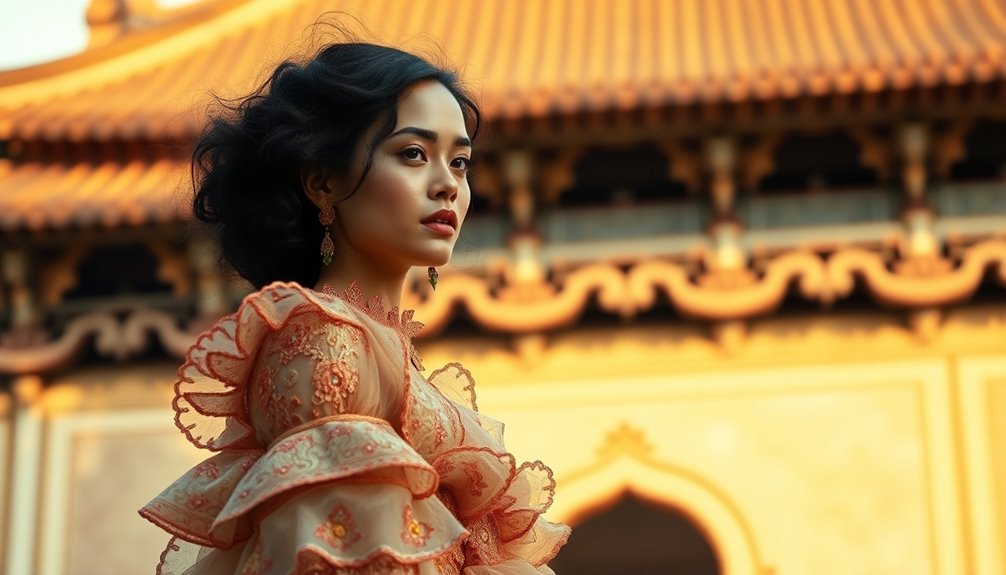
Haute couture isn't just about fashion; it serves as a powerful reflection of cultural values and artistic expression. When you explore haute couture, you see how it shapes and mirrors societal ideals.
Designers like Dior and Chanel have left indelible marks on fashion history, often drawing inspiration from cultural contexts and historical events. With only about 4,000 clients worldwide, each piece becomes a symbol of exclusivity and wealth, influencing global fashion trends.
As you witness couture collections, you connect with the narratives behind them, discovering stories of innovation, tradition, and creativity. This artistic dialogue not only elevates the garments but also reinforces Paris's status as the global fashion capital, continuously shaping the industry and inspiring future generations. The craftsmanship involved in haute couture reflects intricate details that showcase the highest level of fashion design and artistry.
Economic Impact
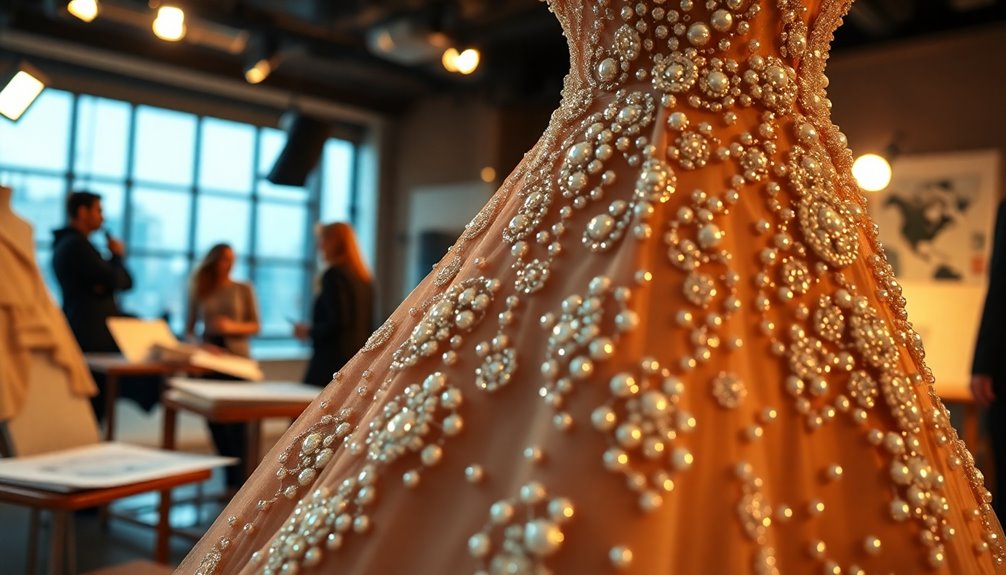
Couture's economic impact extends far beyond the confines of the fashion industry, influencing various sectors and generating substantial revenue. When you consider haute couture, you're looking at a vibrant ecosystem that supports countless jobs and drives economic growth.
Here are some key aspects of its economic influence:
- Job Creation: Supports designers, artisans, and retail staff.
- Luxury Market Growth: Contributes considerably to the global luxury fashion market.
- Tourism Boost: Attracts visitors to fashion capitals, enhancing local economies.
- High-Value Sales: Garments command premium prices, reflecting exclusivity and craftsmanship.
- Media Attention: Couture shows generate buzz, increasing brand prestige and visibility.
Additionally, the networking involved in the fashion industry fosters collaboration and innovation, further enhancing its economic significance.
Modern Developments
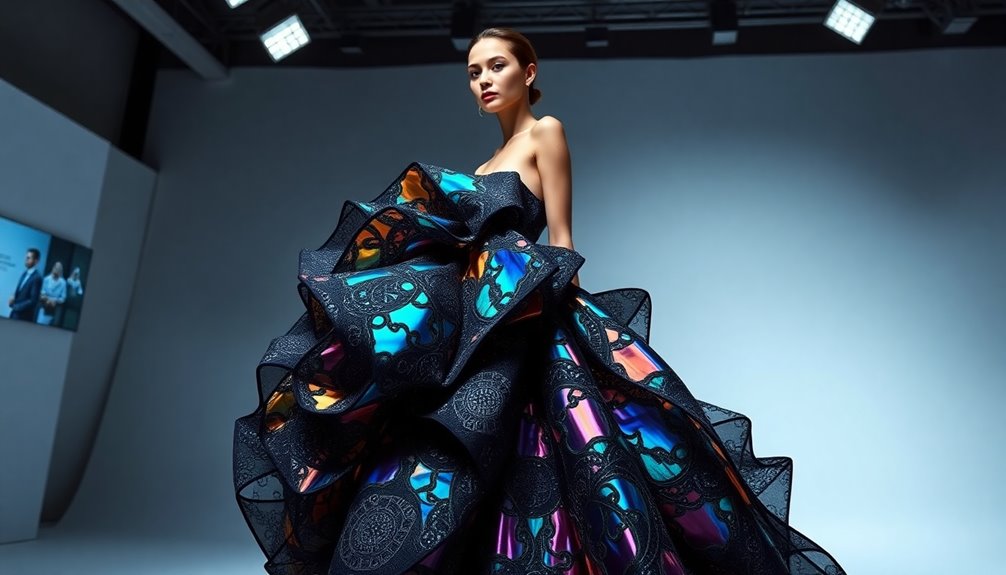
In recent years, modern developments in haute couture have transformed the landscape, blending tradition with innovation.
You'll notice a shift toward inclusivity, as designers embrace diverse sizes and styles to cater to a broader audience. Technology plays an essential role, too; 3D printing and digital fashion shows expand access and enhance the design process.
Independent designers are rising, offering artistic yet wearable pieces that challenge conventional norms. This evolution reflects younger consumers' desire for less formal couture, making high fashion more approachable.
As couture adapts to contemporary demands, it maintains its artistic essence while focusing on personalization and client experience.
These changes guarantee haute couture remains relevant in a rapidly evolving fashion industry.
Sustainability Challenges
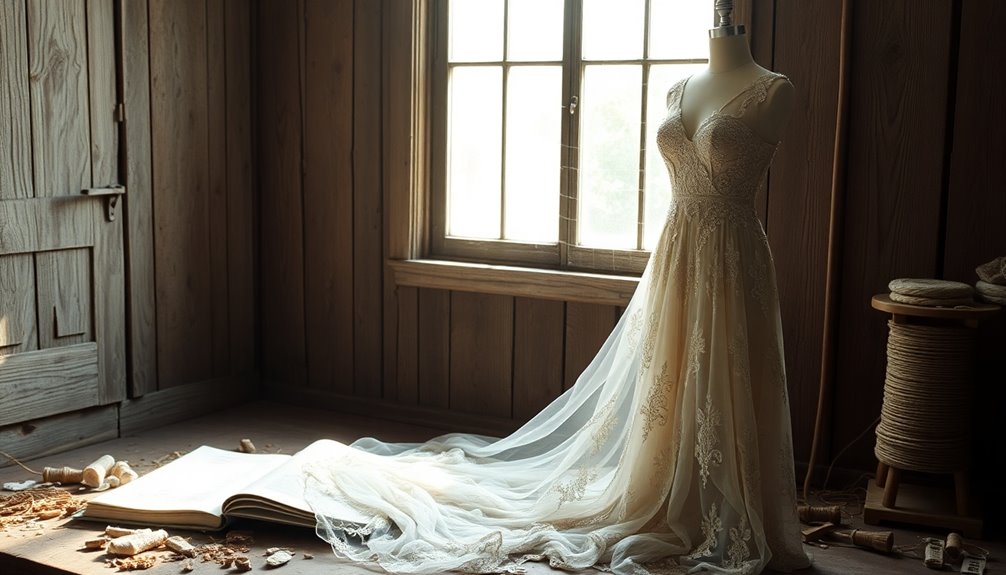
Amid growing concern for the environment, the haute couture industry faces significant sustainability challenges.
As a consumer, you might wonder how luxury fashion aligns with eco-conscious values. The industry grapples with issues such as:
- Excessive waste from discarded fabrics and unsold garments
- High carbon emissions from production and transport processes
- Use of non-sustainable materials, like certain silks and synthetics
- Ethical concerns surrounding labor practices in textile production
- Increasing pressure for transparency from consumers and regulators
Designers are starting to respond, exploring eco-friendly alternatives and improving sourcing practices.
However, overcoming these challenges requires a collective effort, urging both creators and consumers to embrace sustainability as a fundamental aspect of haute couture.
Role of Technology

The intersection of technology and haute couture is transforming how designers create and clients experience fashion.
You'll notice advancements like 3D printing, which enables intricate designs that were once impossible to achieve.
Virtual fitting technologies enhance your shopping experience by allowing you to visualize how garments will look on you, minimizing the need for alterations.
Additionally, digital platforms broaden your access to exclusive collections, making haute couture more attainable.
Social media amplifies brand visibility, connecting you with the latest trends instantly.
With technology's role expanding, designers can adapt quickly to changing consumer preferences, ensuring that each piece remains relevant and innovative while retaining the artistry that defines haute couture.
Embrace this evolution, as it's reshaping the luxury fashion landscape.
Future Perspectives
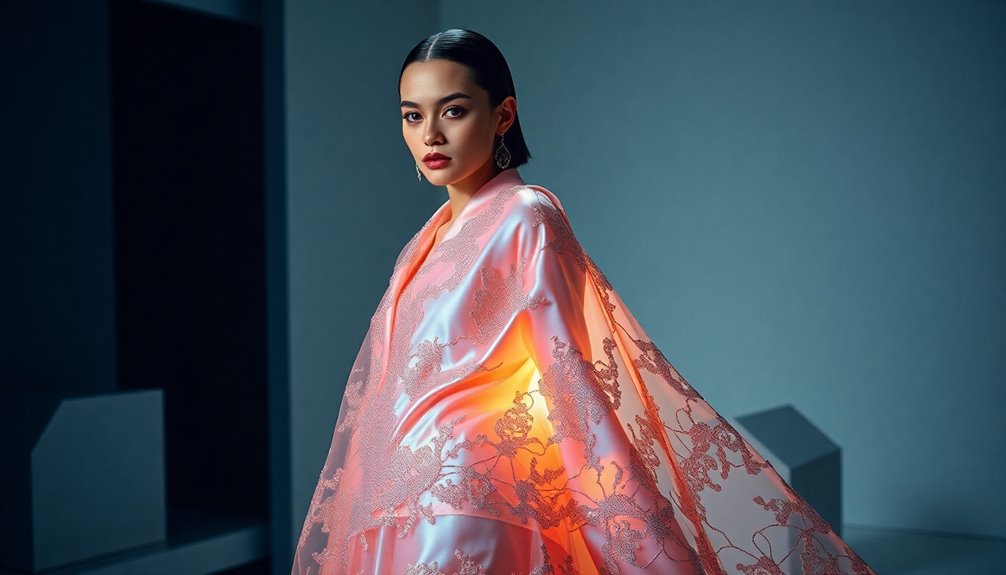
Haute couture's future is poised for a fascinating transformation, driven by a blend of sustainability, inclusivity, and technological innovation.
As you engage with this evolving landscape, you'll notice several key trends shaping the next chapter:
- Increased focus on sustainable materials and ethical production practices.
- Expansion of size inclusivity, catering to a diverse clientele.
- Use of digital platforms for virtual fittings and online presentations.
- Integration of advanced technologies like 3D printing to create intricate designs.
- Emphasis on personalized experiences that resonate with individual tastes.
This fusion of tradition and modernity won't only redefine haute couture but also guarantee its relevance in a rapidly changing fashion world.
Embrace these shifts, and you'll witness haute couture's vibrant evolution.
Frequently Asked Questions
How Can I Buy a Haute Couture Piece?
To buy a haute couture piece, start by researching the established fashion houses like Dior or Chanel.
Visit their boutiques or schedule an appointment for a fitting, as these garments are custom-made. Be prepared for a significant investment, as pricing reflects the craftsmanship and exclusivity.
You'll experience multiple fittings, ensuring the piece is tailored just for you.
Stay updated on Paris Fashion Week for new collections that may captivate your style.
What Are the Differences Between Haute Couture and Ready-To-Wear?
Think of haute couture as a symphony while ready-to-wear is a catchy pop song.
Haute couture pieces are custom-made, showcasing exquisite craftsmanship and using luxurious materials, tailored just for you. They're exclusive, often with limited availability, whereas ready-to-wear offers accessible fashion designed for mass production.
The meticulous attention to detail in haute couture contrasts sharply with the convenience and affordability of ready-to-wear clothing, making each choice a reflection of your personal style and lifestyle.
Who Are the Current Leading Designers in Haute Couture?
When you explore today's haute couture scene, you'll find leading designers like Karl Lagerfeld, who revolutionized Chanel, and Valentino Garavani, known for his romantic aesthetic.
You can't overlook the innovative creations from Dior and Givenchy, either.
Additionally, emerging talents like Giambattista Valli and Iris van Herpen are making waves with their unique visions.
Each designer pushes boundaries, ensuring haute couture remains a dynamic and enthralling part of the fashion industry.
What Events Showcase Haute Couture Collections?
You'll find haute couture collections showcased primarily during Paris Fashion Week, which occurs twice a year.
Designers present their exclusive pieces in elaborate runway shows that highlight craftsmanship and creativity.
Additionally, private showings for select clients and exclusive events often feature these stunning garments.
Sometimes, fashion houses host special presentations or collaborate with galleries to display their work, further emphasizing the artistry behind haute couture and its unique cultural significance.
How Long Does It Take to Create a Haute Couture Garment?
Creating a haute couture garment takes hundreds of hours, often around 600 hours, showcasing the dedication involved.
You'll find that each piece is custom-fitted, requiring extensive fittings and meticulous hand-execution from skilled artisans.
It's not just about fashion; it's an art form that blends craftsmanship with creativity.
When you wear haute couture, you're not just donning clothing; you're embracing a unique piece of artistry that reflects countless hours of hard work and expertise.
Conclusion
As you step back from the intricate tapestry of haute couture, you see a vibrant mosaic of tradition and innovation. Each stitch tells a story, weaving together culture and artistry in a breathtaking dance. The industry, while rooted in history, is blossoming toward a future that embraces sustainability and inclusivity. Like a phoenix rising from the ashes, haute couture is reinventing itself, ensuring that its charm endures, enchanting generations to come with its timeless elegance.
